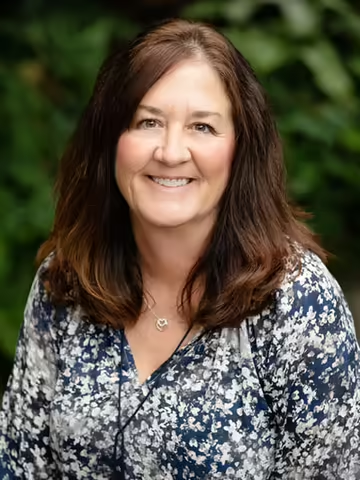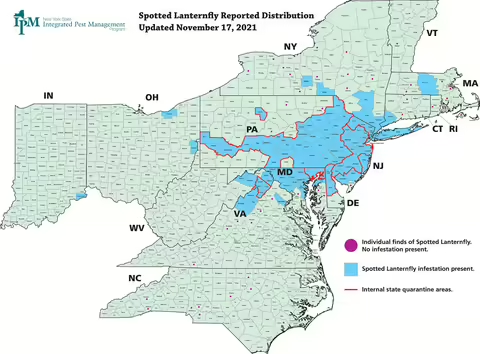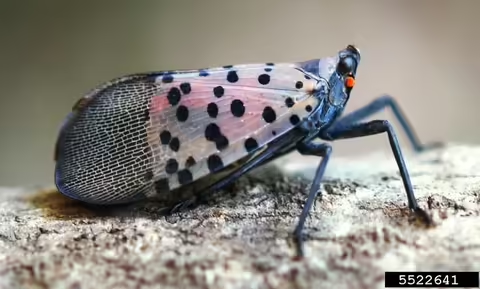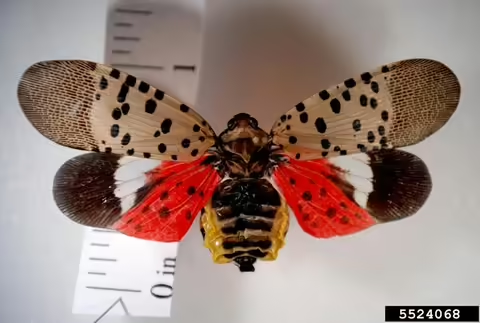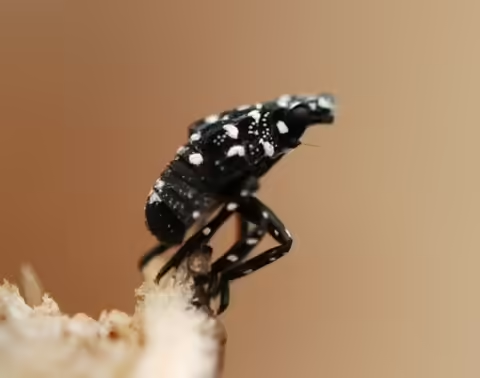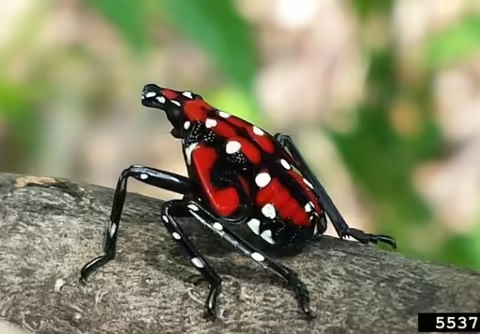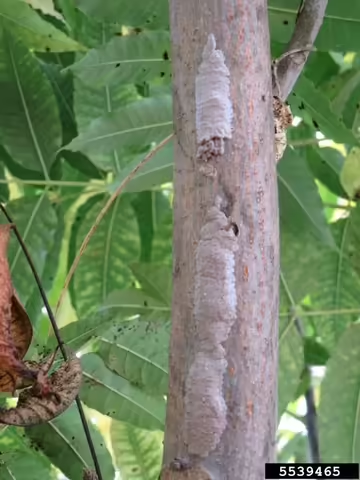
Pesticide Safety Education Program Recognized for Innovation
By Matt Gill
The Pesticide Safety Education Program (PSEP) Team was the recipient of the University of Illinois Extension Excellence in Innovation Award for 2021. This was for their rapid development and deployment of asynchronous online training courses and remotely proctored certification exams for commercial and private pesticide applicators in Illinois. A total of 7 unique training courses were utilized by 7,000+ individuals, and 12,000+ remotely proctored exam attempts were administered across 19 unique certification exams. While initiated as a response to COVID-19, overwhelmingly positive clientele feedback has implanted this new outreach method as a permanent fixture in the PSEP program and the Illinois Department of Agriculture’s pesticide applicator certification program. The team was honored to receive this award and looks forward to developing more online programs for applicators.
Jean Miles Recognized for Achievement and Excellence
By Michelle Wiesbrook and Matt Gill
Jean Miles was the recipient of the University of Illinois Extension Office Support Excellence award for 2021. Additionally, she also received the University of Illinois’ Department of Crop Sciences’ B.B. Singh Award for Outstanding Staff Achievement for 2021. As the Program Facilitator for the Pesticide Safety Education Program (PSEP), Jean has sole responsibility for managing over 12,000 yearly attendee registrations at 35-40 training clinics. While serving as the logistic backbone of PSEP, Jean’s pragmatic approach to problem solving has helped lead the program through a rapid transition to asynchronous online training courses. Moreover, her accessible personality and expertise as a front line communicator adds value to PSEP and the public perception of Extension as a whole. Congratulations, Jean!
Illinois Pesticide Applicator/Operator Training & Testing Options for 2021-2022
By Travis Cleveland and Matt Gill
University of Illinois’ Pesticide Safety Education Program (PSEP) will not offer in-person training during Winter 2021 or Spring 2022. In consultation with our program’s stakeholders over the last several months, it was determined that we should continue our pause of in-person clinics for the time being. While we understand this is disappointing to many, we are optimistic to safely and efficiently return to our popular in-person training clinics for Winter 2022. We certainly miss talking with and serving our pesticide applicators in person. PSEP continues to offer the following resources to individuals preparing for Illinois Pesticide Certification Exams:
Training Option A: Online Training
Self-paced online training courses are available for common categories of licensure to assist in preparing for certification exams. To best serve our diverse clientele, the courses are designed to be completed asynchronously (i.e. on your own schedule and at your own pace). Each course will guide you through lessons instructed by PSEP specialists, and keep you engaged with plenty of exam-prep questions along the way.
Online Training: A Closer Look
Training Option B: Self-Study Publications
If you would rather study with a pen and paper instead of an iPad, PSEP has an option for you as well. Training Manuals are available for each category of licensure. Accompanying fill-in-the-blank-style workbooks are available for common categories, which will help guide you through the manual and prepare you for the associated exam.
Illinois Department of Agriculture (IDA) anticipates 15,000–20,000 certification exams will be offered during the 2022 certification year. In a typical year, most of these exams would be administered at in-person training and testing clinics. In the absence of in-person training clinics, IDA will utilize online testing and limited in-person testing to meet certification needs.
Testing Option A: Online Testing
IDA introduced online testing for pesticide licensing last year. The online testing option will continue for the 2021-2022 season. Certification exams will be available in an online format through a commercial proctoring service. Exam length and time allotment will be similar to that of in-person testing. However, individuals will need to schedule each exam with the proctoring service, and pay the service’s $12 proctoring fee. Schedule your exam at least 72 hours prior to your desired exam start time to avoid added fees.
Testing Option B: In-Person Testing
For those needing an alternative to online testing, IDA will continue to offer free in-person testing for all certification exams. Pre-Registration is required for all sessions. No walk-ins allowed. Register early as space is limited Locations and seating may be limited due to COVID restrictions. To check availability or register for an exam, please visit www.agr.state.il.us
PLEASE NOTE! Pursuant to Illinois Executive Order 2021-20, a properly worn mask or cloth face covering is required during all in-person testing sessions. For those unable or unwilling to comply, please utilize the online testing options.
Testing or Licensure Questions? - Contact the Illinois Department of Agriculture at (800) 641-3934
Pesticide Use in Greenhouses: Some Quick Questions and Answers
While many pesticide product labels specifically list greenhouses as approved application sites, many products do not mention greenhouses at all. This ambiguity begs the following question: If an application to those sites is not explicitly excluded but the crop in mention is listed, would the application then be allowed?
US EPA’s current position on greenhouse application is that in accordance with FIFRA section 2(ee). A label does not have to specify greenhouse as a site, provided the crop is on the label, in order to use the product in a greenhouse. This is in contrast to the previous February 6, 1991 EPA policy decision which stated otherwise. Keep in mind that individual states may enact further restrictions on the use of the product within the state to protect sensitive use sites such as greenhouses.
How is "greenhouse," as a use site, defined by EPA? Would EPA consider cold frames to be greenhouses?
For the purposes of the Worker Protection Standard (WPS), 40 CFR 170.3 defines "greenhouse" as "any operation engaged in the production of agricultural plants inside any structure or space that is enclosed with nonporous covering and that is of sufficient size to permit worker entry. This term includes, but is not limited to, polyhouses, mushroom houses, rhubarb houses, and similar structures." EPA has not defined "greenhouse" in the context of use sites but the WPS definition is instructive. If a cold frame is enclosed with nonporous covering and is large enough to permit worker entry, it would likely be considered a greenhouse.
But wait. There’s an even broader definition being used too.
Within the newly revised WPS, EPA uses the term “enclosed space production” and defines it as “production of an agricultural plant indoors or in a structure or space that is covered in whole or in part by any nonporous covering and that is large enough to permit a person to enter. Enclosed space production areas are commonly known as: greenhouses, warehouses, mushroom tunnels, mushroom houses, and hoop houses.” So, be aware that this language could possibly be found on pesticide labels. Within the WPS, you’ll find guidance on “greenhouses” as well as “enclosed spaces”.
Our colleagues at Michigan State University have a nice article on using pesticides on vegetables in the greenhouse. It delves much deeper into related topics on pesticide use in these unique grower situations.
Sources:
- Adapted from AAPSE membership email discussions, fall 2021.
- EPA's Pesticide Labeling Questions and Answers
- Michigan State University's Vegetable pesticide series: Can I use it in the greenhouse?
Keep an Eye Out for Spotted Lanternfly
Spotted lanternfly has been found in Indiana
Spotted lanternfly (Lycorma delicatula), was reported in Switzerland county, Indiana in July, 2021. This location is far removed from areas we usually think of as spotted lanternfly hotspots, like Pennsylvania and New Jersey. According to the local news, spotted lanternflies are thought to have been introduced to Indiana on freight rather than movement by the animal itself. Indiana DNR is working with researchers and landowners to control the spotted lanternfly population.
Though spotted lanternfly has not been found in Illinois, it is important to be aware of this pest so it can be quickly recognized if or when it arrives. Home gardeners and professionals who work in agricultural and residential landscapes, like applicators and operators, are usually the first people to find and report invasive species, so it is important that they know how to recognize and report spotted lanternfly.
Why is spotted lanternfly important?
Spotted lanternflies can congregate in high densities and become an extremely destructive pest in fruit crops, especially vineyards. They are also problematic in forest and landscape areas, damaging ornamental plants and woody trees. This insect can harm plants both by sucking plant fluids in large groups and by coating plants in their sugary droppings, called honeydew. Honeydew can leave the surface of leaves sticky and promote sooty mold growth.
While spotted lanternfly can feed on over 100 plant species, its preferred host is tree-of-heaven (Ailanthus altissima). This is a common, and difficult to manage, invasive plant found throughout Illinois. The abundance of tree-of-heaven and temperate climate makes Illinois favorable habitat for spotted lanternfly.
Early detection is important to slow or prevent the insect from becoming established in Illinois.
How does spotted lanternfly reach new locations?
Spotted lanternfly can disperse over short distances and long distances to reach new locations. They can cross short distances by walking, jumping and flying. Using these types of movement, individuals can travel about 3 or 4 miles.
The main way spotted lanternflies move long distances is through unintended transportation by humans. Spotted lanternflies can enter open cargo trucks and freight train cars while they are being loaded. They can also be carried to new locations on nursery plants, firewood and camping gear. This can occur during any spotted lanternfly life stage. This is the main reason spotted lanternfly has been so difficult to contain.
Currently, human transportation is the main way spotted lanternfly might reach Illinois.
What does spotted lanternfly look like?
Spotted lanternfly adults are 1 inch long and about ½ an inch wide at rest. Their forewings are gray with black spots and held over their body like the roof of a house. Their hindwings are red and black with a white band and can be seen when the adult is in flight. Adults are active from late July through fall.
Spotted lanternfly young are called, nymphs. They go through four wingless nymphal stages before they reach their adult life stage. During the first three nymphal stages, they are black with white spots. During the fourth and last nymphal stage, they are red and black with white spots. Nymphs are active from late April or early May until late July.
Egg masses often look like gray smears of mud on the surface of trees. Each egg mass consists of 30-60 eggs covered in a putty-like substance. While tree-of-heaven is the preferred reproductive host of spotted lanternfly, adult females may deposit egg masses on any hard, smooth surface, including yard furniture and logs. Eggs are spotted lanternfly’s overwintering life stage, they are present from fall until they hatch in late April to early May.
Look for spotted lanternfly on and near tree-of-heaven. Adults and nymphs may cluster in groups on plants and egg masses my be found on trees or any items with hard smooth surfaces.
How do I report spotted lanternfly if I find one?
If you encounter spotted lanternfly in Illinois, please report it! To report a spotted lanternfly, submit a picture and detailed email explaining where and when it was found to lanternfly@illinois.edu or call Illinois Department of Agriculture at (815) 787-5476. If you are not sure or have questions, please call your local Illinois Extension Specialist, we are happy to help.
Additional Resources:
- Spotted lanternfly reported distribution map is regularly updated, Cornell University Cooperative Extension
- Checklist of objects where you might find spotted lanternfly, Cornell University Cooperative Extension
- Tree-of-heaven control strategies video, Pennsylvania State Extension
- Close-up video of adults and egg masses, University of Massachusetts Extension
NPDES Permit Update
By Maria Restrepo-Turner and Michelle Wiesbrook
Since 2011, the National Pollutant Discharge Elimination System (NPDES) program has required a permit for the application of biological pesticides or chemical pesticides that leave a residue, when the pesticide application is for one of the following pesticide use patterns: Mosquito and Other Insect Pest Control, Weed and Algae Pest Control, Animal Pest Control, Forested Area Pest Control, Other Pest Control Activities. This allows the Illinois Environmental Protection agency to regulate and monitor the discharges into Illinois streams and lakes. The permits establish the conditions under which the discharge may occur and establish monitoring and reporting requirements. The federal program renewed on October 31, 2021. Since this is a general permit with one expiration date, coverage has ended for anyone who had previously been granted permit coverage under the general permit. If you and your future applications will be affected by this, you will need to take steps to obtain coverage under the new general permit which will be in effect for 5 years until October 31, 2026. Applicators who previously had coverage will be required to fill out the same Notice of Intent (NOI) even if it is just a renewal. If it is a renewal, please be sure that your issued permit number is on the form so that the IEPA does not think that it is a new permit instead of a renewal.
Forms can be found here at this link. You may need to download the form to the desktop to get it to open. There is no change to the form or fee.
For assistance in navigating the NPDES permit process and determining if permit coverage is needed for your situation, University of Illinois PSEP specialists offer these additional resources, found at the PSEP website:
NPDES Permits for Pesticide Application: A Summary for Illinois Applicators
NPDES FAQ for Pesticide Applicators
It is recommended that you utilize the off-season to make determinations about your permit coverage needs. Do not wait until algae is present and immediate treatment is needed. The permit process requires a few weeks from application to approval.
Download This Issue of the Newsletter
Download, save, and share the 2021 November/December issue of the newsletter.
Editorial Notes
The development and publication of this newsletter has been supported with funding from the Illinois Department of Agriculture.
Michelle Wiesbrook, Extension Specialist, Pesticide Safety Education
The Illinois Pesticide Review is published six times a year. For more information about pesticide safety or for more issues of this newsletter, please visit us at www.pesticidesafety.illinois.edu. You can also reach us at 800-644-2123.
Disclaimer: Mention of trade names in this newsletter is for general information purposes only and does not constitute endorsement of one product over another, nor is discrimination intended against any product.
Copyright © 2021, Board of Trustees, University of Illinois
Find Us On Social Media
We’re on Facebook! Follow our University of Illinois Extension Pesticide Safety Education (PSEP) page for updates on programs, news, and events.

